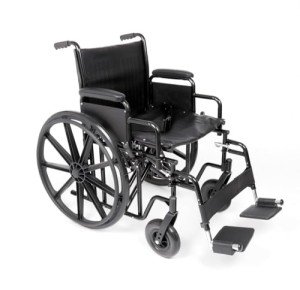Bariatric Transport Wheelchair
Created to be pushed by caretakers, transport chairs feature smaller sized front wheels and larger rear wheels. They are a popular choice for users with minimal mobility who can not stroll separately.
When looking for a lightweight bariatric transport wheelchair, consider the user's requirements and how they'll use the chair. Likewise, determine any doorways and other areas the chair will travel through.
Seating
Bariatric transport chairs feature a big 22 to 36 inch broad seating location that accommodates extra-large users. The chair seat is made from breathable nylon and includes cushioned arms that can be removed and swing-away footrests. Unlike basic wheelchairs, which are ideal for average body weights, bariatric chairs have heavier frames built from strengthened materials and larger rear wheels that make it easier to push them. Talk to a mobility specialist for more information about your choices and to determine which kind of wheelchair is ideal for you. Bariatric wheelchairs are often covered by insurance coverage companies like Medi-Cal if your medical condition satisfies their coverage criteria.
Frame
Bariatric transport wheelchairs use durable frames made from strengthened materials like steel and have wider seats than basic wheelchairs. They are created for individuals with higher body weights and can hold a maximum weight capacity of 700 pounds. bariatric wheelchair 26 inch seat have larger rear wheels, which make them simpler for caregivers to push. Bariatric wheelchairs are frequently covered by insurance such as Medi-Cal, depending upon the patient's particular medical requirements and medical diagnosis. Ask a health care professional or mobility professional to assist select the right chair for your distinct requirements.

Click here for more information. Medline Bariatric Transport Chair. Crimson Hammertone Frame.
Weight
While standard wheelchairs have lighter frames and smaller sized wheels, bariatric transport chairs feature heavier-duty materials and a wider seat to accommodate users who weigh more than average. Since of their specialized style and building, they tend to cost more than basic chairs. However, some insurance programs like Medicare and Medi-Cal may cover the expense of these chairs if the user fulfills the criteria for protection. To read more about which chair is right for you, get in touch with a rehabilitation specialist today.
Wheels
Bariatric transport wheelchairs have bigger rear wheels than basic designs, making them easier to press. They're frequently utilized in hospitals and home settings, where the chair is pressed by caretakers. The extra-large rear wheels also permit the chairs to navigate a range of surface, including outdoors.
Standard wheelchairs typically have smaller wheels, that make them more maneuverable indoors however less appropriate for everyday usage on outside streets and other surface areas. Mobility experts recommend seeking advice from a doctor or mobility specialist to pick the very best wheelchair for your specific needs and goals.
This durable, nylon reinforced steel transport chair supports clients approximately 500 pounds and features a spacious 22" seat, cushioned desk-length armrests, swing-away footrests and hand brakes. The 12-inch rear wheels guarantee a smooth ride in any environment.
